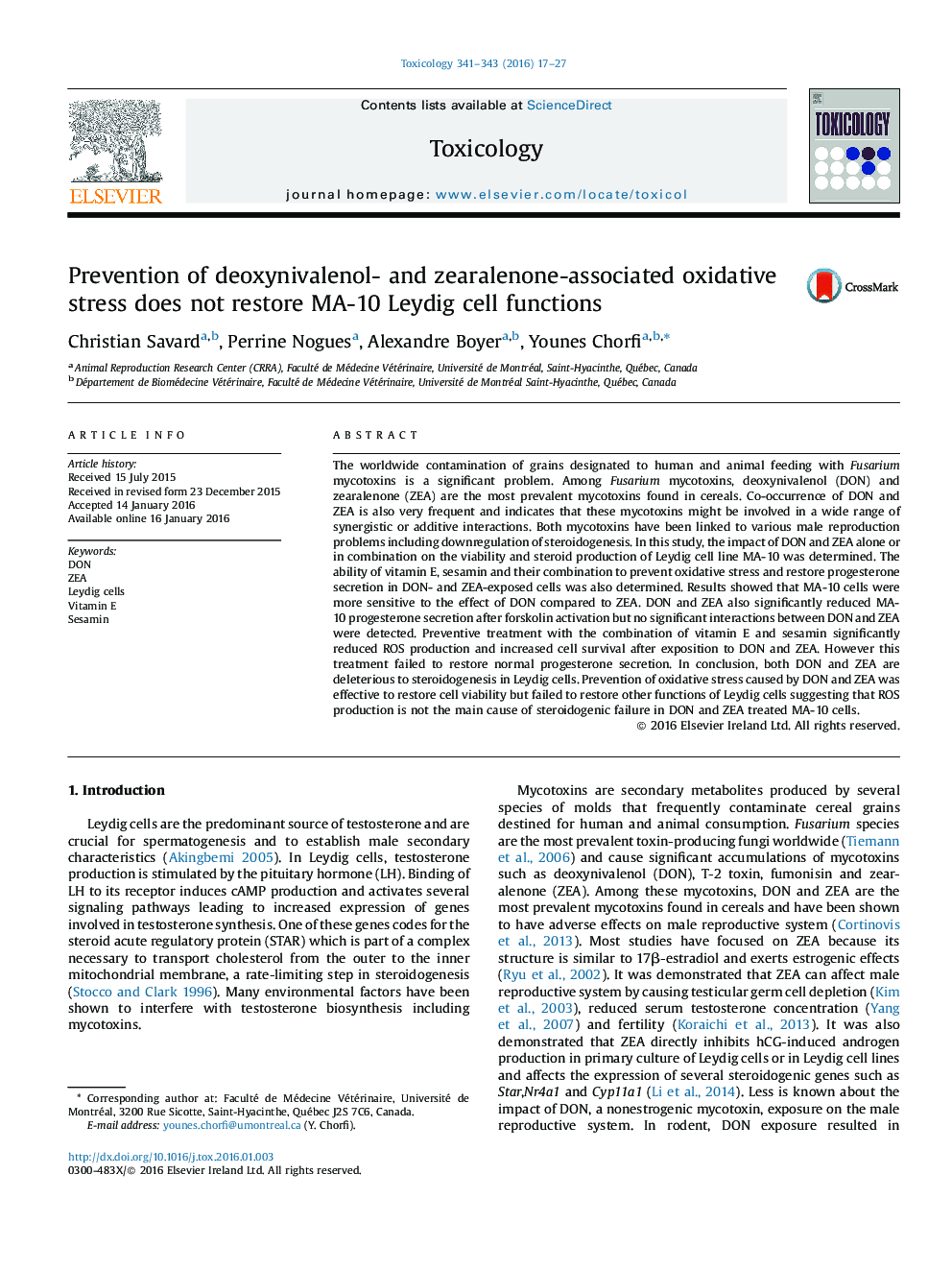| کد مقاله | کد نشریه | سال انتشار | مقاله انگلیسی | نسخه تمام متن |
|---|---|---|---|---|
| 2595471 | 1562315 | 2016 | 11 صفحه PDF | دانلود رایگان |

• MA-10 Leydig cells are a good model to study mycotoxin effects on male reproduction.
• DON and ZEA can have adverse effects on MA-10 Leydig cells.
• DON and ZEA reduce progesterone secretion in MA-10 cells after forskolin activation.
• Combination of vitamin E and sesamin reduced oxidative stress in MA-10 cells.
• Prevention of oxidative stress do not restored progesterone secretion.
The worldwide contamination of grains designated to human and animal feeding with Fusarium mycotoxins is a significant problem. Among Fusarium mycotoxins, deoxynivalenol (DON) and zearalenone (ZEA) are the most prevalent mycotoxins found in cereals. Co-occurrence of DON and ZEA is also very frequent and indicates that these mycotoxins might be involved in a wide range of synergistic or additive interactions. Both mycotoxins have been linked to various male reproduction problems including downregulation of steroidogenesis. In this study, the impact of DON and ZEA alone or in combination on the viability and steroid production of Leydig cell line MA-10 was determined. The ability of vitamin E, sesamin and their combination to prevent oxidative stress and restore progesterone secretion in DON- and ZEA-exposed cells was also determined. Results showed that MA-10 cells were more sensitive to the effect of DON compared to ZEA. DON and ZEA also significantly reduced MA-10 progesterone secretion after forskolin activation but no significant interactions between DON and ZEA were detected. Preventive treatment with the combination of vitamin E and sesamin significantly reduced ROS production and increased cell survival after exposition to DON and ZEA. However this treatment failed to restore normal progesterone secretion. In conclusion, both DON and ZEA are deleterious to steroidogenesis in Leydig cells. Prevention of oxidative stress caused by DON and ZEA was effective to restore cell viability but failed to restore other functions of Leydig cells suggesting that ROS production is not the main cause of steroidogenic failure in DON and ZEA treated MA-10 cells.
Journal: Toxicology - Volumes 341–343, 3 February 2016, Pages 17–27